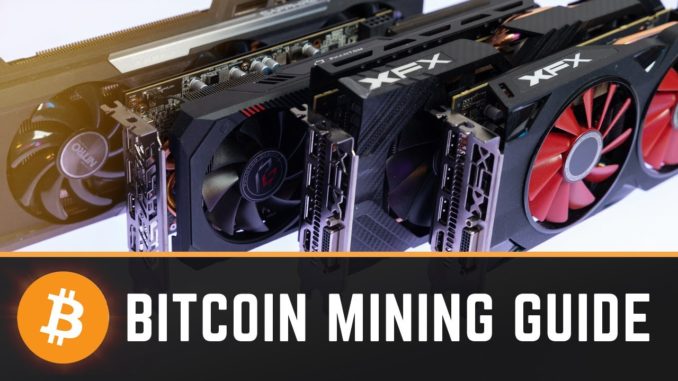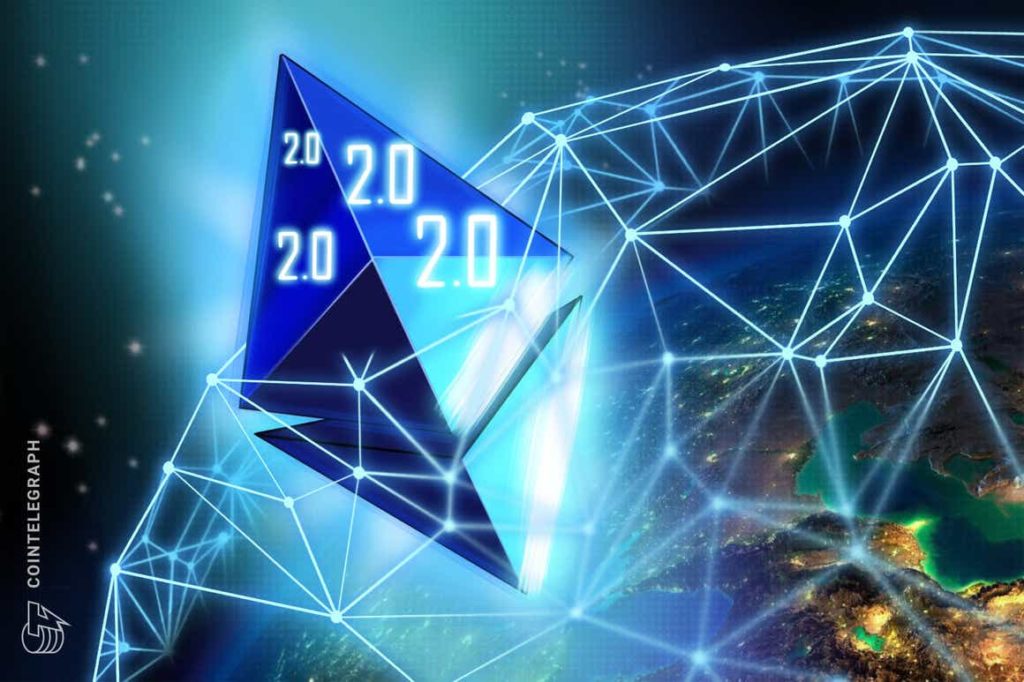The price of Ether (ETH) nearly hit a new all-time high on Oct. 21 before falling below $4,000 after the $435-million options expiry on Oct. 22 soured the mood. The Ethereum network is set to take another step toward Ethereum 2.0 on Oct. 27 at epoch 74240 with the Altair upgrade to Beacon Chain. Eth2 will be an entirely proof-of-stake (PoS) network, for which the community has been gearing up for over a year now.
As per an Ethereum Foundation blog post explaining the development, Altair is an update to the Beacon Chain that brings support for light clients, pre-validator inactivity leak accounting, a rise in slashing severity, and clean-ups to validator rewards allowing for simplified stated management. This is the first scheduled upgrade to the Beacon Chain.
The blog post states that this update represents a “warm-up upgrade” for the Beacon Chain and its associated clients. Essentially, the update will bring several main features to the Ethereum 2.0 network.
First, the introduction of sync committees for light client functions allows light clients to easily sync up the header chain, with low computational and data costs.
Second, the incentive accounting reforms bring three main changes: The storing actions use a more efficient bit field format that reduces complexity, the “inactivity leak” quadratic is based per validator instead of globally — which is insignificant for validators that participate more than 80% of the time — and there are some bug fixes in the reward accounting.
Du Jun, co-founder of crypto exchange Huobi Global, told Cointelegraph: “Pre-Altair, if a chain stops finalizing for two weeks, fully inactive validators lose ~11.8% of their balance and validators active 75% of the time lose ~3.1%. Post-Altair, the fully inactive validator’s loss would be ~15.4% but the 75% active validator’s loss would only be ~0.3%.” This will make the inactivity leak more forgiving to honest, but irregular, validators.
Keep calm and upgrade your client to beacon chain Altair HF compatible version ASAP!
Please ensure the version of your beacon node and validator client is greater than what https://t.co/pK78fogKbd listed.
Altair will go live at epoch 74240 (Oct 27, 2021, 10:56:23am UTC)! pic.twitter.com/d6vPzUT09U
— Hsiao-Wei Wang (@icebearhww) October 25, 2021
Third, the update brings about changes in penalty parameters that make inactivity leaks and slashing more punitive than in the pre-Altair era. There will be three main changes to these parameters. The inactivity penalty quotient is reduced by 25%, which reduces the time it takes for balances to leak by nearly 13.4%. The minimum slashing quotient is decreased from 128 to 64 — the quotient being the minimum fraction of the total balance that a slashed validator will lose. This puts the minimum slashing penalty at 0.5 ETH, double the previous penalty of 0.25 ETH.
The proportional slashing multiplier will also be increased from one to two, entailing that the slashing penalty will now double the percentage of other validators that were slashed within 18 days of that validator. Jun explained this change further: “For example, if you are slashed and within 18 days (in both directions) 7% of other validators are also slashed, pre-Altair your slashing penalty would have been 7%, post-Altair it would be 14%.”
Such tweaks in the incentive structure are often extremely critical for the security of the network, as they reward higher degrees of contribution and adjust across the spectrum accordingly. Currently, however, this change will not directly impact users and decentralized applications (DApps) on the network, as it is an upgrade that impacts only the Beacon Chain.
However, this will affect Ethereum users once the transition to Eth2 finally takes place. Jun said this upgrade will lower the threshold for users to participate in Ethereum 2.0:
“One of the main goals of Altair is to make a light client easy and efficient enough that it can be run inside any environment (mobile device, embedded hardware, browser extension, and even inside another smart-contract-capable blockchain).”
The redistribution of validators’ benefits will result in the redesign of the rewards and penalization structure for validators, making the incentives for the network’s contributors more systematic and easy to understand with logical reasoning.
A warm-up for the Merge
It makes sense that this update is being run as a “warm-up” for Beacon Chain upgrades in the future, as the economic stakes are relatively low right now. Since the node operators will have already experienced a simultaneous upgrade on the chain, any forthcoming upgrades heading toward the Merge should roll out more smoothly — which is more critical, as there will be a significant amount staked on the network in the aftermath of the Merge.
Ben Edgington, an Ethereum developer and product owner for Teku — an Eth2 client developed by ConsenSys — spoke with Cointelegraph about the way Altair ties in with the upcoming Merge:
“The proof of stake upgrade, known as The Merge, will be the biggest upgrade in Ethereum’s history. The Altair upgrade will give us valuable experience to ensure that The Merge goes smoothly when it is ready for deployment in 2022.”
When asked about the impact of the upgrade on Beacon Chain stakers, Edgington said that by and large, they will not notice any difference with Altair. It is essentially a “tidying up” exercise that doesn’t impact the expected rewards that stakers can earn nor the way they interact with the chain in any way.

As described in Ethereum Improvement Proposal (EIP) 2982, the change in the punitive parameters will apply to both slashing and inactivity leaks. Edgington mentioned that the reduction of these penalties at the outset of the Beacon Chain was done to allow stakers to find their feet and gain confidence. The Merge will ultimately set their penalties to their full “cryptoeconomically optimal values,” while Altair increases them a bit in that direction. He explained further how this benefits the security of the network:
“The beacon chain has never suffered an inactivity leak, and only 0.06% of validators have been slashed, so these penalties are largely theoretical. They are designed to make deliberate attacks against the beacon chain very expensive. Increasing them with Altair does therefore increase the security of the chain.”
Rick Delaney, senior analyst at OKEx Insights — the research team of cryptocurrency exchange OKEx — told Cointelegraph that this is a vital component of the network’s security, stating: “If incentives are misaligned, malicious actors may be able to game the system.”
Merge may alter “Ethereum killers” dynamic
The Altair upgrade is the next major update to the network, following the London hard fork that took place earlier this year in August. The hard fork mainly brought in EIP-1559, which changed the transaction pricing mechanism so that a certain portion of the gas fees are burned, putting ETH on a deflationary path.
According to data from Ultrasound.money, the current burn rate of Ether is 5.31 ETH/min, and to date, over 628,000 ETH — worth over $2.6 billion — has been burned. The rate of supply growth currently stands at 2.2% a year. A simulation of the Merge on Ultrasound.money’s website shows that this rate of supply will become negative, down to -2% a year.
Delaney elaborated on the impact of gas fees on the entire ecosystem, saying: “It is a part of the ongoing upgrade that should bring Ethereum gas fees down. Thus far, ‘Ethereum killers’ have benefited from the dominant smart contract network’s often prohibitively large fees. It will be interesting to see if those chains retain market share if Ethereum’s sharding implementation rolls out smoothly and lowers transaction costs.”
Related: Staking on Ethereum 2.0, explained
The Merge will deliver the PoS consensus mechanism to the entire Ethereum network, after which scalability is touted to improve as data sharding is deployed on the network. Until this time, competing blockchain networks that have a functioning smart contract utility, like Solana and Binance Smart Chain, could continue to gain ground on the basis of their low gas fees.
Edgington further noted the network’s support for layer-two solutions through which users can access lower gas fees than are present on the existing layer-one network:
“As devs, we don’t overly trouble ourselves with Ethereum Killers. […] Meanwhile, layer-2 roll-up technologies on Ethereum are already delivering huge scalability benefits and a rich ecosystem of exciting new capabilities, fully backed by Ethereum’s base-layer security. The protocol upgrades over the next year and beyond will support and enhance everything that is happening on layer-2.”
While the Altair upgrade may not mean much for the end-users of the Ethereum network, it is highly significant for developers and other community participants who are eagerly anticipating the Merge, which is scheduled for 2022. Earlier in October, 40 representatives from Eth1 and Eth2 teams, the Ethereum Foundation, and ConsenSys met together for a week during which they successfully built a testnet running PoS with multiple clients from both Eth1 and Eth2.
Such an achievement is a huge boost in confidence that Ethereum will be able to entirely transition to PoS and turn off the Eth1 proof-of-work network for good.





